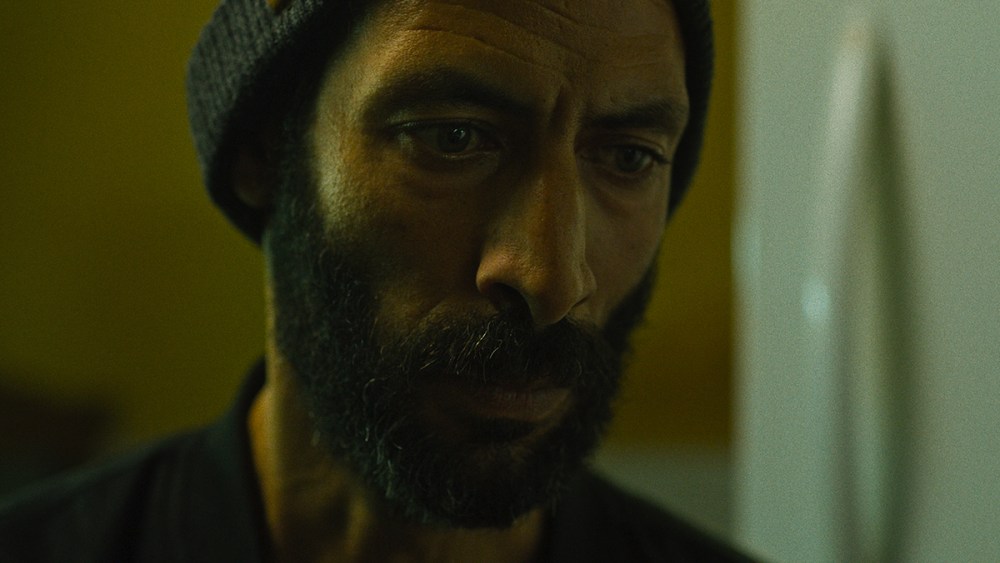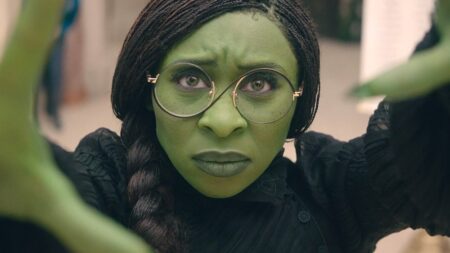Having made a splash with tense and brutal petty crime caper short “No Key,” an Indie Short Fest winner that also screened at Fantastic Fest, Casablanca-born director Walid Messnaoui and fast-building Moroccan production house Caestus Films are preparing Messnaoiu’s first feature, “The Last Beast of Atlas,” described as a twilight Western and drama.
“The Last Beast” rates as one of the buzzy debuts to be presented at the Marrakech Film Festival’s Atlas Workshops, which promises a dazzling array of titles from usually young talent from Africa and the Arab World which embrace a huge variety of genres. “The Last Beast” is a prominent example.
Produced by Caestus Films founders Taoufik Rais and El Mahdi Amsrouy, “The Last Beast of Atlas” is set in the heart of the Middle Atlas in the 1990s. It turns on Boulohouch, a legendary outlaw who leading a band of rebels, becomes a symbol of freedom and terror.
“But as the myth begins to crumble, the man behind the legend is revealed, blurring the line between hero and villain in a Morocco torn between ancient traditions and the dawn of a new millennium,” the synopsis runs.
“The Last Beast of Atlas’ deconstructs the myth of Boulohouch, a legendary hunter who truly existed and became the leader of Morocco’s most infamous outlaw gang in the Middle Atlas in the 1990s,” producers Rais and Amsrouy told Variety.
“Revered by some as a Robin Hood figure and feared by others as a ruthless bandit, Boulohouch embodies the complex duality of heroism and villainy. The film explores how societies build their heroes – only to tear them down,” they added.
The movie is written by Smail Mojahid, a screenwriter and professor of screenwriting at the ISMAC (Institut Supérieur des Métiers de l’Audiovisuel et du Cinéma) in Rabat.
“When Walid came up with the idea of making a film about Boulohouch, Smail was the obvious choice,” said Rais and Amsrouy. “Having grown up in the Middle Atlas region, he has an intimate understanding of this story and the cultural nuances surrounding it. His ability to transform such stories into powerful epics has been essential in shaping ‘The Last Beast of Atlas.’
At the Atlas Workshops, Rais and Amsrouy will present the screenplay, a detailed financing plan, and a production schedule. “These materials will provide an overview of the project’s creative vision and our financial strategy for its realization,” they said.
With two titles at the Workshops – “The Last Beast of Atlas” and Yassine Iguenfer’s “The Nours” – Caestus Films is fast consolidating as a player on the Moroccan film scene. Founded in 2019 by Rais and Amsrouy, it aims to showcase the country’s rich cultural heritage through cinema. “The company specialises in adapting legendary tales and fundational myths, offering stories with universal appeal to international audiences,” the producers said.
Variety caught up with Messnaoui, whose “No Key,” a lamenting portrait of drug-sluiced machismo established him as talent to track.
The Last Beast of Atlas” is described as “a twilight Western and drama.” Could you explain how the two combine?
Messnaoui: I don’t see it as a combination of two genres. A twilight Western inherently deals with the end of an era – a story of decline, where heroes face death, obscurity, or question their place in a world that’s changing around them. When you tell such stories, especially about real people, drama naturally emerges. The genre itself is a reflection on mortality, societal shifts, and the weight of legacy, making drama an inseparable part of that exploration.
When you talk of a “twilight Western,” do you have any in mind?
Absolutely. There are many, but two stand out: “The Assassination of Jesse James by the Coward Robert Ford” by Andrew Dominik and the Coen Brothers’ “No Country for Old Men.” Both are contemplative and atmospheric, with landscapes that are deeply intertwined with the characters’ inner journeys. This profound connection between setting and narrative is something I deeply admire and aim to emulate in my work.
You set the film in the 1990s, and the synopsis talks about the “new millennium.” Is this a reference to modernity hitting the Middle Atlas? If so, what forms did it take?
Yes, absolutely. There were many areas in Morocco, particularly in the Middle Atlas, that felt forgotten for a long time. In these places, people often perceived themselves as living outside of time and space – not part of contemporary society or even the broader nation. This could be seen as either freedom or lawlessness. However, the 1990s marked a turning point. As the new millennium approached, modernization began to encroach upon these isolated pockets of tradition, reshaping their way of life. The concept of a “Twilight Western” emerged naturally from this dynamic. Instead of the typical desert setting, I envisioned a “green frontier” with mountains and vast forests –an unfamiliar yet fitting backdrop for this kind of narrative.
Could you drill down about how you plan to direct the film: What kind of style?
It’s difficult to define a specific style, as I aim to create something uniquely my own. That said, I envision the film starting out silent and contemplative, emphasizing the vastness of nature in contrast to the character’s struggles. I want to blend narrative authenticity with a stylized aesthetic. The forests and mountains will be filmed with a certain glow, reminiscent of Kurosawa’s “Dreams” or John Boorman’s “Excalibur.” I aim to create almost fantastical landscapes that frame a deeply realistic story. The pacing will gradually build, culminating in frenetic, intense sequences near the film’s climax.
Walid Messnaoui, El Mahdi Amsrouy, Taoufik Rais
Read the full article here








